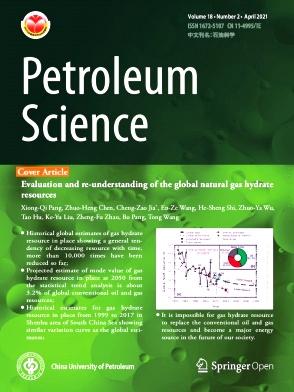Ball-sealer transport characteristics and plugging performance in vertical wells
IF 6
1区 工程技术
Q2 ENERGY & FUELS
引用次数: 0
Abstract
Ball-sealer plugging is a cost-effective method for hydraulic fracturing in vertical wells, yet the transport and plugging behavior of ball sealers remains poorly understood. This paper investigates ball-sealer plugging using both experimental and numerical approaches. A coupled computational fluid dynamics (CFD) and discrete element method (DEM) model simulates ball transport under field conditions, validated by experiments in inclined pipes. Results show that plugging performance improves with a higher flow rate ratio of the perforation, allowing effective plugging even when the ball is far from the target perforation. There exists a threshold distance between the ball and the perforation under specific conditions. The closer the ball is to the wellbore wall, the higher the likelihood of successful plugging. Low-density balls can enhance plugging performance to some extent. At high flow rates, ball inertia along the wellbore axis increases, reducing the ball's ability to redirect and weakening plugging performance. Ball interactions also affect their positioning and plugging success. In vertical wells with multiple clusters, prioritizing higher flow rates to the first fracturing cluster optimizes overall plugging performance and minimizes excessive plugging in lower, under-stimulated clusters. These findings offer valuable insights for optimizing ball-sealer deployment in well completions, improving operational outcomes.
直井密封球输运特性及封堵性能
对于直井水力压裂来说,球封是一种经济有效的封堵方法,但球封的输运和封堵性能仍不为人所知。本文采用实验方法和数值方法对球密封堵塞进行了研究。计算流体力学(CFD)和离散元法(DEM)耦合模型模拟了现场条件下的球输运,并通过倾斜管道实验进行了验证。结果表明,射孔流量比越高,封堵性能越好,即使球远离目标射孔也能有效封堵。在特定条件下,球与射孔之间存在一个阈值距离。球离井壁越近,成功封堵的可能性越高。低密度球可以在一定程度上提高封堵性能。在高流速下,球沿井筒轴的惯性增加,降低了球的定向能力,削弱了封堵性能。球的相互作用也会影响它们的定位和封堵成功。在具有多个压裂簇的直井中,将高流速优先用于第一个压裂簇可以优化整体封堵性能,并最大限度地减少低压裂簇的过度封堵。这些研究结果为优化完井过程中的球封器部署、提高作业效果提供了有价值的见解。
本文章由计算机程序翻译,如有差异,请以英文原文为准。
求助全文
约1分钟内获得全文
求助全文
来源期刊

Petroleum Science
地学-地球化学与地球物理
CiteScore
7.70
自引率
16.10%
发文量
311
审稿时长
63 days
期刊介绍:
Petroleum Science is the only English journal in China on petroleum science and technology that is intended for professionals engaged in petroleum science research and technical applications all over the world, as well as the managerial personnel of oil companies. It covers petroleum geology, petroleum geophysics, petroleum engineering, petrochemistry & chemical engineering, petroleum mechanics, and economic management. It aims to introduce the latest results in oil industry research in China, promote cooperation in petroleum science research between China and the rest of the world, and build a bridge for scientific communication between China and the world.
 求助内容:
求助内容: 应助结果提醒方式:
应助结果提醒方式:


